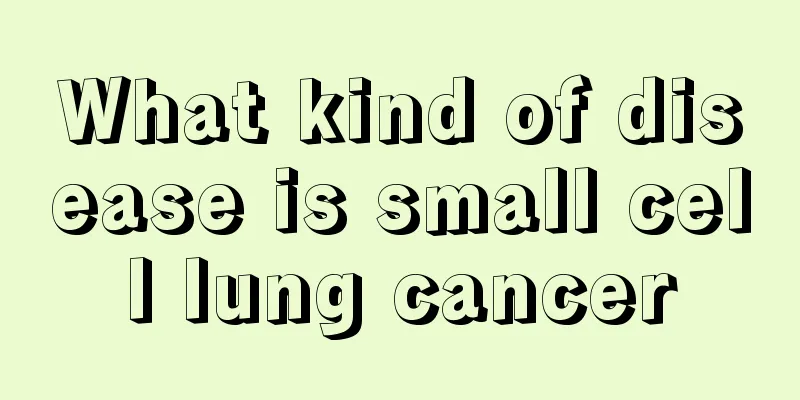What kind of disease is small cell lung cancer

|
What kind of disease is small cell lung cancer? The symptoms of this disease may not be very obvious at the beginning, so many people do not pay much attention to it, but in the later stage, it will seriously affect the danger of life. So, let's learn about what kind of disease is small cell lung cancer! It is generally believed that small cell lung cancer originates from Kulchitsky cells (argyrophilic cells) in the bronchial mucosa or glandular epithelium and belongs to APUD (amine precursor uptake decarboxylation) tumor. Some people also believe that it originates from stem cells in the bronchial mucosal epithelium that can differentiate into neuroendocrine. Small cell lung cancer is the least differentiated and most malignant type of lung cancer. It often occurs in the central part of the lung, grows rapidly, and metastasizes early. Under a light microscope, the cancer cells are small and short spindle-shaped or lymphocyte-like, with little cytoplasm and a naked nucleus. Cancer cells are densely arranged in groups, separated by connective tissue, and sometimes cancer cells are arranged in groups around small blood vessels. Electron microscopic observation of the ultrastructure showed that the tumor cell cytoplasm contained typical axon-like neuroendocrine granules, but the amount of granules varied, and it was proven to be related to 5-HT and ACTH. From the perspective of immunohistochemical studies, tumor cells are positive for NSE, 5-HT, CgA, and some cases (10%) are positive for Sy, proving that small cell carcinoma has neuroendocrine function. In addition, positive immunohistochemical reactions are shown to CK and EMA at the same time in the same tumor. The treatment of small cell lung cancer is mainly chemotherapy, which can be combined or sequentially with radiotherapy. For less than 5% of early-stage patients whose disease is limited to the lung parenchyma, surgical treatment is considered. Limited-stage SCLC is mainly treated with synchronous chemoradiotherapy or chemotherapy and radiotherapy sequentially. Synchronous chemoradiotherapy is better than sequential treatment. Synchronous chemoradiotherapy should be performed as early as possible, and preventive whole-brain radiotherapy should be given. Preventive whole-brain radiotherapy has significant benefits for survival. Extensive-stage SCLC is mainly treated with chemotherapy, and local or metastatic lesions are treated at an elective time. |
<<: Brief introduction to the manifestations of small cell lung cancer
>>: Experts help you understand small cell lung cancer
Recommend
Can brain cancer be operated on again?
Can brain cancer be treated with surgery again? 1...
How to press down the hair when it is sticking up
If your hair is hard, you will find that your hai...
Symptoms and signs of colon cancer
Intestinal cancer is a common malignant tumor of ...
Colon cancer may be related to family history
Colon cancer may be related to family history, an...
White spot on coronal sulcus
There are many vitiligo patients in life. Vitilig...
Too white toilet paper can increase the risk of leukemia!
Leukemia is a type of malignant clonal disease of...
Will my father's prostate cancer be inherited?
Prostate cancer is a common male disease. Patient...
What makes lung cancer so rampant
When it comes to cancer, people will easily think...
Drugs that can control the growth of lymphoma
Lymphoma has different stages. It is also one of ...
What eye drops to use for corneal red blood streaks
The phenomenon of corneal erythema is the presenc...
How is glioma generally treated?
Glioma is a malignant tumor of the brain. If you ...
Let's take a look at the clinical manifestations of uterine cancer.
The harm of uterine cancer to women cannot be ign...
Can I use plaster during breastfeeding?
The body of a breastfeeding woman is quite specia...
Before and after the Big Snow solar term, Yang Qi is stored. A scallion can "promote Yang".
Winter is a relatively long season in the year, e...
Can Tieguanyin be drunk after 7 years?
In my country's tea culture, different variet...









